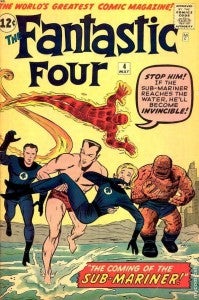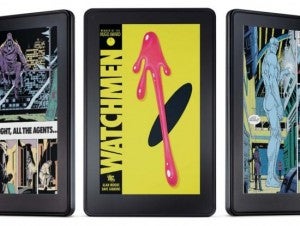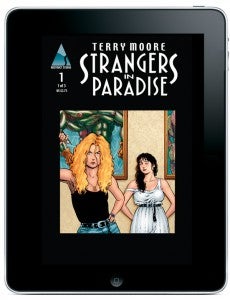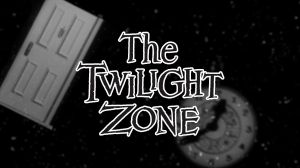The following is from Guest Columnist Gerry Conway.Known forever to fandom as “the man who killed Gwen Stacy,” Conway is also the co-creator of The Punisher, Firestorm, Power Girl, Man-Thing, Werewolf-by-Night, The Jackal, Killer Croc, Tombstone, Tarantula, Count Vertigo, Vibe, Vixen, Commander/Citizen Steel, and many other popular (and not so popular) characters for Marvel and DC Comics.Gerry sold his first story to DC editor Murray Boltinoff a few weeks before he turned sixteen. At eighteen he was writing for Marvel full time; by twenty, he was scripting Marvel’s flagship title, Amazing Spider-Man. His most recent work in comics is “The Last Days of Animal Man.” His most recent writing project is the young adult novel, “Arkham Academy.”
Videos by ComicBook.com
And so, as we could have predicted, Amazon wrecks Comixology.What has it been, less than a month since Jeff Bezos bought the most promising tool for renewing the mass distribution of comics in the digital era? I’ll give the man this: he’s moved faster to undermine an existing technology for the benefit of his own company than General Motors did when it sabotaged Los Angeles’s public transit Red Line for the benefit of the bus fleet they wanted to sell the City of Angels. Job well done, Jeff.For those of you who don’t know what I’m talking about, as of yesterday, Comixology removed the storefront from its digital reading app for comics on the iPad and iPhone. It didn’t replace it with anything, just a link that takes you out of the app to the Comixology website. No big deal, right? Just one (or two, or three, as it turns out) additional step for the fanatic comic book reader to access comics on his digital reader. Nothing to get upset about.Wrong. This is a very big deal, because it strikes to the heart of what made Comixology’s app a near-perfect venue for discovering and falling in love with new comics, a venue creators and publishers have been searching for since the collapse of mainstream newsstand distribution in the late 1970s-early ’80s: it destroys the casual reader’s easy access to an impulse purchase. And that’s a terrible development for the future of comics.I’m going to say something that I hope you won’t misinterpret (oh, who am I kidding, this is the internet, of course it’ll be misinterpreted): comics have been struggling in a ghetto for thirty years. That ghetto is called the comic book store. Please don’t hate me, comic book store owners — I love you, I love your dedication to the form, I fully support you, and never want to see you replaced. Yet the fact remains that for someone to discover a comic book today for the first time, he or she pretty much has to be a comic book reader already, or know someone who’s a reader, and he or she has to be comfortable immersing themselves immediately in a very specific sub-cultural experience by stepping through the doors of a comic book specialty shop.Thanks to movies and games and other media, of course, many people do so, but not as many as once did (ask any comic book store owner) and not with any consistency. There just aren’t that many comic book stores and they just aren’t that easily accessible. (How many comic book stores are there at your neighborhood Westfield mall?)Comic book publishers know this, and that’s why they’ve embraced digital distribution while still trying to support the comic store experience. Comixology provided a fabulous tool to do so — a way to easily introduce casual readers to new comics and provide quick and easy access to the vital impulse buy.Impulse buys are crucial to hooking new readers to new books. I bought my first comic by impulse at a candy store around the corner from my parents’ apartment in Brooklyn in 1961. (Yes, I’m very old. Age makes me cranky sometimes but it also gives me perspective born of experience.)
Fantastic Four Sex Criminals











